There are certain works in any genre or specialty that come to define the school of thought that produced them. Heavy Metal existed before Iron Maiden’s Mark of the Beast or Dio put out Holy Diver, Science Fiction movies existed before Planet of the Apes or 2001: A Space Odyssey, Horror writing existed before Edgar Allan Poe wrote “Berenice” or H.P. Lovecraft wrote “The Call of Cthulhu.”
So it goes with the Stealth genre of video games. The first Metal Gear was an NES game. One which saw a sequel, a reboot in Metal Gear Solid , and a sequel to the reboot, Metal Gear Solid 2: Sons of Liberty, which some would argue is among the best games ever released, all before the first entry in Tom Clancy’s Splinter Cell debuted in 2002. Yet even still it’s hard to remember the genre before the influence of Ubisoft’s long running series. Shooting out lights and whistling from the dark to bait unwitting guards to you feels like second nature to us now. Hiding unconscious or dead guard’s bodies in poorly lit corners or behind dumpsters is a common mechanic in games and feels like it’s always been here.
Now there’s rumors yet again that there might be another game on the way after an 8 year hiatus, so we figured it was the perfect time to run down our ranked list of all the mainline Splinter Cell games. We’re focusing on the original release of the narrative relevant games here. So things like the 3DS re-release of Chaos Theory aren’t being considered. Let’s jump in with Number 7!
7: Tom Clancy’s Splinter Cell Essentials
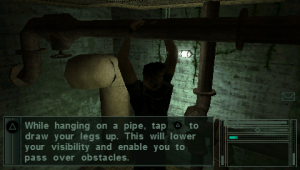
For anyone who has followed the ebbs and flows of this franchise, it likely isn’t a surprise that Essentials is our pick for number seven. This PSP exclusive was a noble effort to take the series mobile in a serious way (all previous games had separateversions made for Gameboy Advance and N-Gage, but this was the first completely original game made for a handheld) and given the limitations of the time and the console itself, it could have been far worse.
Luckily the narrative of the game is largely unimportant for most fans as this is a compilation game telling small back stories from our protagonist Sam Fisher’s life. The look at significant past missions is an interesting idea that’s also a clever way to avoid trying to tell an epic globe trotting spy thriller that the console games were known for. Critics at the time were not impressed and especially hated the multiplayer, a buggy, poor version of the classic “Spies vs. Mercs” introduced in Pandora Tomorrow.
Sadly for those interested in trying Essentials for themselves, you would need to find both a working PSP and a physical copy of the game on disc as it has never been released on other platforms. Though maybe that’s just as well.
6: Tom Clancy’s Splinter Cell Double Agent
“Experimentation is the key to innovation” is the saying that best applies to Double Agent. Not only was it considered a massive departure from the hard-nosed pure stealth of the first three main console games, it is also the only game in the series thus far that was a transition to a new generation of console hardware as there has not been an official new game released for the current generation.
This transition was punctuated by the fact that there are actually two different versions made. According to the story canon, the 360/PC/PS3 version, developed by Ubisoft Milan and Shanghai who made Pandora Tomorrow, is the official version. Whereas the version released on the PS2/Xbox was developed by Ubisofe Montreal who made the first game and Chaos Theory using the same engine and as one can imagine it plays a lot more like those original trilogy of games. Other than just game play though, the games have a whole host of differences in plot points and character development.
The primary release on 360 is a departure in both structure and style. The story sees our
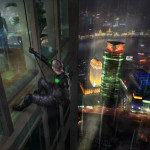
beloved Sam Fisher have to go undercover inside a terrorist organization to try and bring them down from within while feeding Third Echelon information on their plots along the way. While it is still primarily a stealth game, some of these levels take place in the daylight which requires a much more aggressive on-the-move approach to the action. In between main story missions there are a series of what amount to hub-world missions where Sam has to sneak around the terrorist headquarters and dig up information on future attacks, as well as rise through the ranks and gain the organization’s trust. There’s a morality system in place monitoring whether Sam is more trusted by the terrorists or Third Echelon, but ultimately it doesn’t have any teeth since only one of the multiple endings is considered real in the story going forward. This game was also far and away the darkest in the series up until this point and the official ending is a heartbreaking gut punch for most any long time fan of the series. The main positive from the story is seeing Sam Fisher move from just being a pitch perfect player avatar character performed by the beloved Michael Ironside, to taking on a more active role in the story.
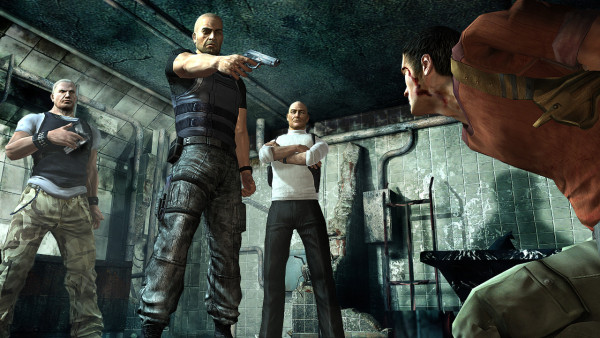
Ultimately the departure Double Agent represents, while still fun and worth the time, does not live up to the standards set by the previous games nor does it establish itself as a unique and interesting take on its mechanics. Both of which are problems that neither of the two games that followed both had. At least if you want to give this one a try, both generation’s editions are available on XBOX ONE backwards compatibility so you can compare and contrast the two versions for yourself!
5: Tom Clancy’s Splinter Cell Pandora Tomorrow
In what would become a major trend in the 2000’s, the original Splinter Cell was followed by a sequel that was bigger, had more features and depth and generally grew the whole experience in incredibly smart ways. The sequel, subtitled after the terrorist plot that motivates the story, saw Sam Fisher globe trotting once again to find and dismantle a series of bio-bombs.
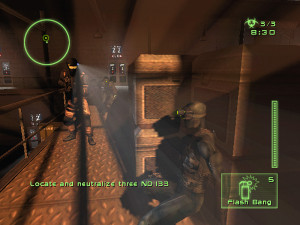
Like the other two entries in the series initial trilogy, Pandora Tomorrow’s narrative is solid, above average political intrigue and espionage fiction. Storytelling as a whole is a quality that has slowly slipped from the spotlight in Ubisoft’s Tom Clancy games in general; as they have become increasingly focused on other elements. But that wasn’t the case here. The character of Sam Fisher was not as developed as he would become in later games, but Michael Ironside plays the gruff agent with the bone dry sense of humor incredibly well.
However, despite all that, the biggest feature added to the series in this entry was the addictive Spies vs. Mercs multiplayer mode. A team of mercenaries playing in a first person shooter perspective compete against spies playing in third person trying to complete or prevent the objective, in this case placing and activating one of the bio-bombs from the campaign. It was a smash hit and would continue to be a major aspect of the series’ appeal going forward.
The series would have highs and lows after this but Pandora Tomorrow is a solid entry that suffers a little from being both a first update and a middle chapter in a trilogy. So ultimately it lands somewhere just south of middle on our list.
4: Tom Clancy’s Splinter Cell
It’s an interesting thing placing the original entry on a ranked list of a series. If it’s placed too high then it could represent a lack of innovation 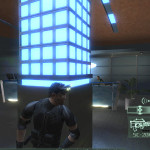
The original Splinter Cell may feel mechanically bare bones now after nearly two decades. But when it originally released in 2002, having a game take a serious and measured approach to stealth action was a revelation. This had none of the overlong cinematics of the Metal Gear Solid games from which it was inspired, instead choosing to tell the story in short cinematics working as bookends and in-game dialogue between the new protagonist Sam Fisher and his two handlers, Lambert and Grimm. Sam’s movement was more fluid and acrobatic than Solid Snake’s was too, and his evasion and stealth techniques were based on darkness and more set in reality with vertical bar on the side of the screen showing how hidden he was.
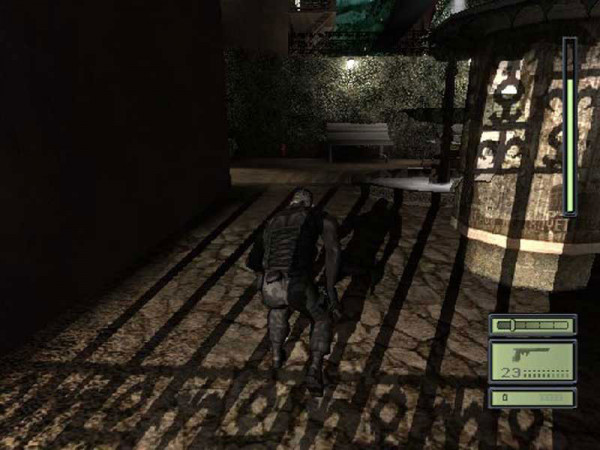
Sam Fisher’s voice was provided by the raspy baritone of Michael Ironside. The gravitas and subtle sense of genuine humor he provided went a very long way to turn the world of Splinter Cell into a truly serious one, with real stakes and tension: rather than a silly one that took itself seriously. These aspects plus the official endorsement from Tom Clancy himself meant that Splinter Cell presented a unique and exciting take on the genre that was inviting to players who wanted stealth action, but weren’t fans of the over the top quirkiness of the MGS titles.
The metaphor behind the game’s name is an elegant one: a single covert operative, digging their way into a situation like a splinter of glass: unseen, untraceable. A precise and deadly clandestine tool of war. A one person strike team sent in to do what must be done for the sake of the free world. Establishing that concept alone means that this game’s a classic for a reason. It laid a fantastic foundation for the rest of the franchise. But the series would reach greater heights as it progressed, and for that it’s a bullseye middle in the rankings.
3: Tom Clancy’s Splinter Cell Blacklist
Innovation can be a two sided sword. You generate new use potential and a new set of a fans. But outside the ever shrinking hardcore set of fans that can stand having a few changes made to their favorite properties, you risk losing players who like things just the way they are. Blacklist was designed to thread that needle.
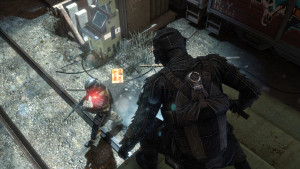
After the extremely mixed reactions of both the fan base and the critics to its two predecessors that took on more aggressive action oriented or experimental gameplay, Ubisoft found themselves with conflicting ideas of where to take the seventh game in a franchise that was at that point nearly a decade old. They had, to perhaps over simplify, created two groups of fans that wanted very different things. Their solution was to design a game around player choice that rewards you no matter how you choose to tackle its levels and enemy encounters.
Want to chase the more aggressive, fast paced nail biting action of Conviction? How about being slow, methodical, and not giving a single guard or camera any knowledge that you were even there until it’s too late for them to do anything about it or they wake up in a dumpster the next morning like in Chaos Theory? How about mixing them together depending on the encounter? Ubisoft Montreal’s answer was to have three experience point trees. So everything you do throws some XP and currency towards helping you get better at playing the way you like. Lot’s of unseen kills unlock more silenced pistols to buy but blowing stuff up unlocks more assault rifles at the store. It’s a great work around that doubles as a great way to inspire replay ability.
The story takes place after the events of Conviction. In this, Fisher is now the director of a new organization called “Fourth Echelon.” An organization that is itself a type of splinter cell in that it doesn’t officially exist, it is extremely small, and it does what is
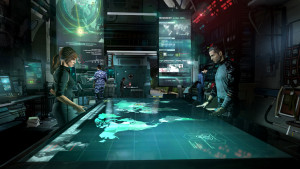
necessary for the sake of the world, answering only to the President herself. It’s a compelling world wide game of moves and counter moves that has some of the best level structure the genre has seen to date.
The story is only brought down by the downright bizarre choice to switch voice actors from Michael Ironside to Eric Johnson for the sake of the motion capture due to Ironside’s age. Isn’t sound mixing a thing? Why not just record his vocal parts later? Eric Johnson is a major voice actor in the industry because he’s good at what he does clearly;but his voice is notably younger and fresher sounding than ol’ Ironside’s, stripping Sam of all the years of experience we’ve been through with him.
Multiplayer also made a comeback with a whole host of options both competitive and cooperative. It’s a fantastic game that any fan of the franchise, stealth action as a genre, or video games in general ought to at least try, and for that we give it the Bronze in number 3. The game came out in 2013 and is so far the most recent entry. Here’s hoping we get a new one soon.
2: Tom Clancy’s Splinter Cell Conviction
When the email blast went out asking for our writing staff to vote and contribute their thoughts to this ranking list, there was a surprisingly large contingency that said some variation of, “I don’t remember all of them but my favorite is the one with Sam in plainclothes,” or “Which one was had ‘old man Sam?’” So much so that logic dictated we put it as number 2 on our ranked list. A move that we have no doubt will stir up controversy.
If Double Agent was a practice in trying more aggressive game-play and gritty storytelling. Then Conviction cranks that practice up into a full blown performance. Sam is no longer an agent of Third Echelon: he’s a wanted man on the run. He is relentlessly pursuing vengeance or justice, depending on how one looks at it, and he’s pissed off. It is a mission of revenge that turns into a last ditch effort to save the world once again as he finds out how deep cut the corruption goes that cost him his best friend and his daughter. This more violent, angry take on Sam even reflects in the game’s main menu: a series of vignettes, showcasing various angles on a time frozen gunfight with puddles of blood and bodies laying around the floor like a violent interactive mystery theater.
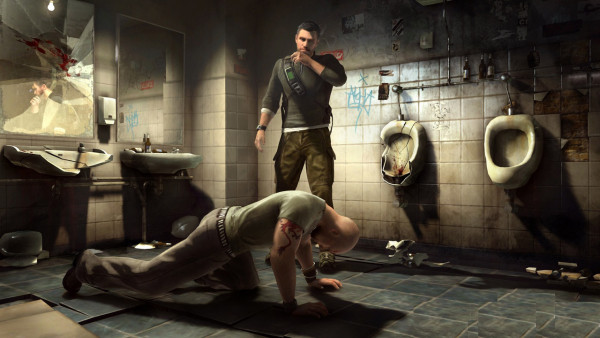
Sam trades in the all-black Third Echelon jumper for a green sweater and cargo pants. You aren’t hiding bodies or timing a perfect knockout here. You’re popping off head-shots, getting up-close-and-personal melee kills when you can, and thereby earning the game’s signature move, the quick draw “Mark and Execute” room clearing finisher that causes Sam to step out from cover and kill up to four soldiers in rapid succession. To adjust to this faster game-play, the stealth system got reworked. In previous titles when you are hidden in darkness a green light on Sam’s back would turn on, but for Conviction rather than a single light, whenever Sam is hidden from view, the color washes out and the screen turns black and white. What this means is that you can move faster and don’t need to have a perfect view of Sam to know if you’re hidden. Running and rolling between cover points lining up headshots before you get located and ambushed is the focus.
The game wears the obvious influence of cover shooters with pride. It is still a stealth game needing thought and strategy, it’s just that the strategy required gets sped way up and turns what was slow and sneaky into quick and devastating. The violence takes a turn up too, with
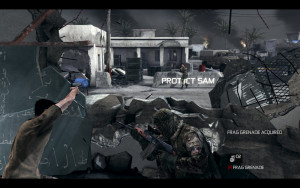
several interrogation scenes that involve things like breaking bathroom sinks with a hostage’s head and stabbing a particularly unlikable white-collar bad guy in the shoulder with a mini American Flag. And the whole thing finishes with one of the best final levels in the series as you have to run into a terrorist attack well underway at the White House to save the President.
The reception was, as has been mentioned, mixed. Some people loved and praised the game for the more serious personal story, the intuitive action stealth gameplay, and co-op multiplayer campaign. Others went so far as to say that it shouldn’t have even been released as part of the Splinter Cell franchise for its departures but most everyone thought that it was an excellent game. Conviction created a two party system in the Splinter Cell fandom and it’s that division that led to the design choices of nearly every aspect of Blacklist 6 years later and has been blamed for why we haven’t seen a new one since. Knowing that you can only make half of the fans happy is a hard pill to swallow when releasing a massive AAA game. It speaks volumes then that people still have such passionate feelings for Conviction and franchise in general. All of which puts it as our number 2. Love it or hate it, it certainly leaves an impression.
1: Tom Clancy’s Splinter Cell Chaos Theory
It’s unlikely that our choice for number one will surprise anyone familiar with Splinter Cell. The truth is that if you like the series for what it started as then the best example ever released is the last in the initial trilogy. Smart and engrossing level design, tense set pieces, impactful story that earns the Tom Clancy title across the board and the best tweaked gameplay of the pure stealth games.
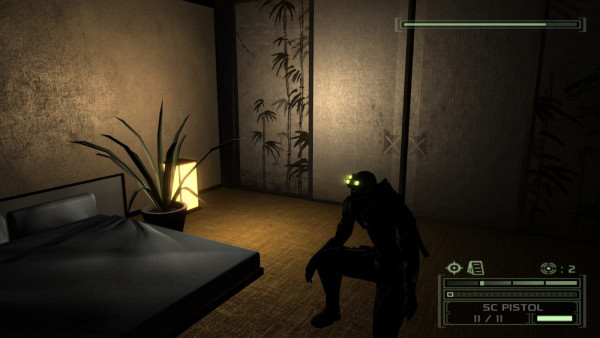
The story is the last time until Blacklist that Sam is not the center-point. Tensions between China, North and South Korea, and Japan have escalated and World War III seems a serious possibility. A new tech weapon has entered into the mix that allows for easy hacking of enemy weapons systems and some dark actors have positioned themselves to profit off the conflict. Sam jets across a world on the brink and has to move quickly to prevent tension turning into mass bloodshed. It’s tense and exhilarating stuff that would have felt just as thrilling if told in any format.
This was the first time Splinter Cell was rated M and it was for good reasons. Killing became more of an option with a tactical knife included in Sam’s kit and interrogations becoming more important and violent, though not yet near where the series would go in Double Agent or Conviction. The benefit of being the third outing is easy to see beyond just the gameplay. As this game has some of the best graphics on its generation’s hardware. Crisp, clean, with more advanced lighting, physics, and models. It might not look as amazing some 15 years on, but it is still easy to see the advancement in graphics and tech made by Ubisoft Montreal. All this goes for the return of “Spies vs. Mercs” too. With that mode being more thought out and refined over its first outing in Pandora Tomorrow.
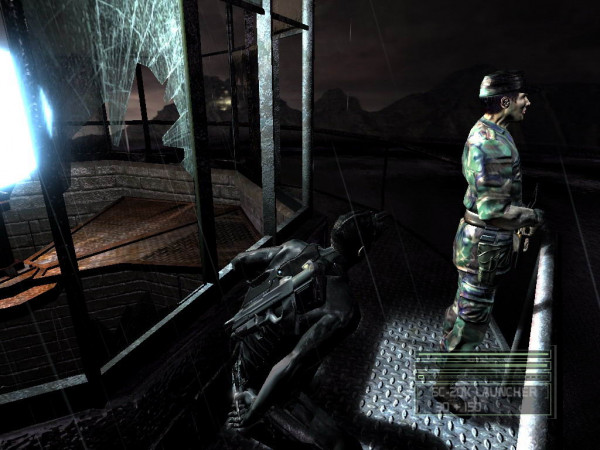
With more options and more tools but no bloat or filler, Chaos Theory is a powerhouse and a must play for any serious videogame hobbyist. It’s is likely to be seen as a special game for a long time, especially for us. So we’re putting it at Number 1.
What do you think? What ranks on our list do you agree with and which do you disagree with? Which entry is your favorite? What would you like to see out of another Splinter Cell game? How is it possible that we have gone this entire generation without a new release?
Let us know in the comments below and on our Facebook, Instagram, and Twitter.
The opinions expressed here are solely of the author’s and doesn’t represent the entirety of MP1st and its staff.
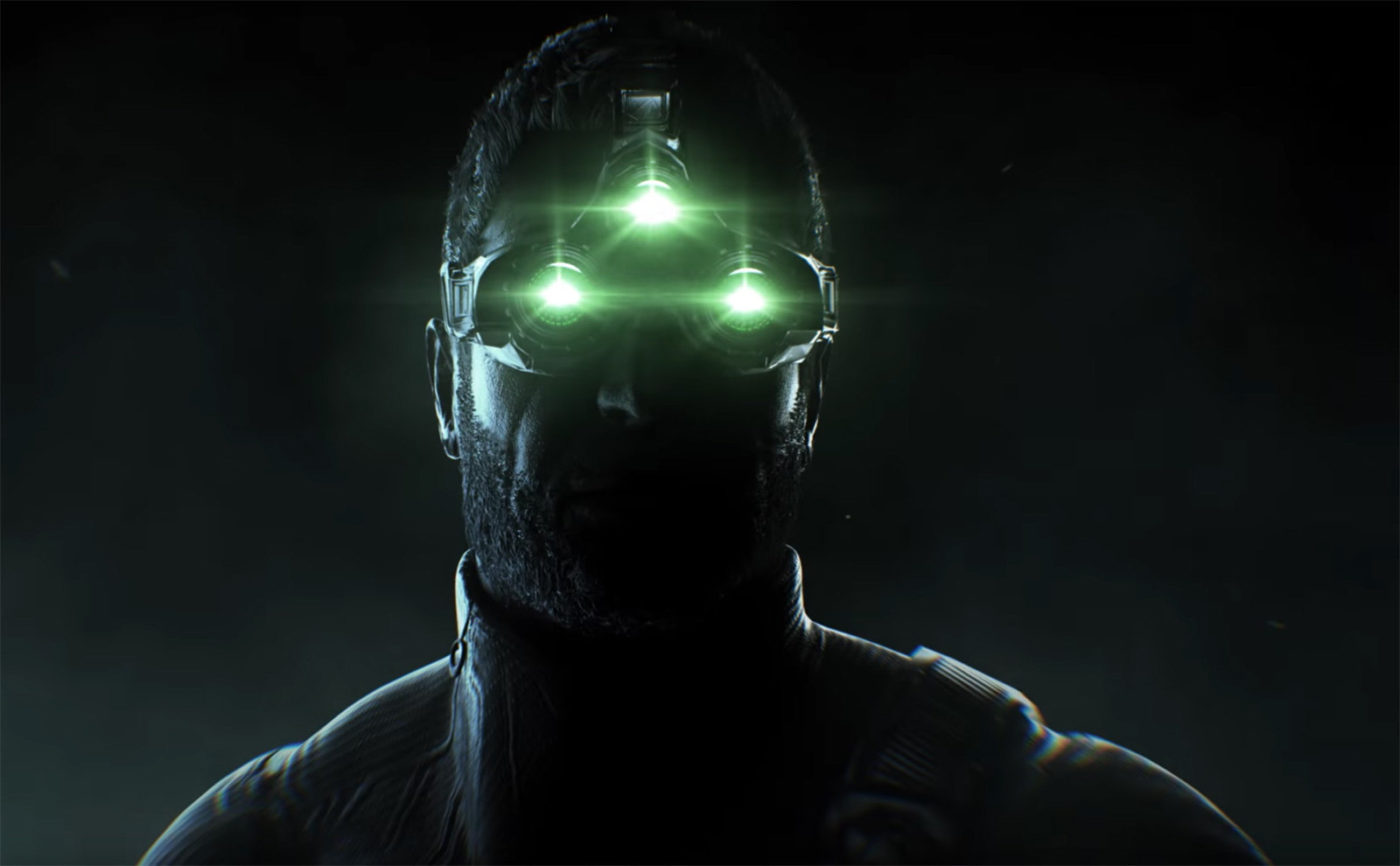
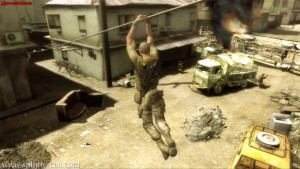
Seeing conviction and blacklist in 2/3 spots. Yucky.
Conviction is good. 🙁 I had fun with it.
Nah. Boring action game focus. Plot was kinda poopoo.
Pandora Tomorrow at 4th place? lol, wut?
The proper list:
1)Splinter Cell
2)Chaos Theory
3)Pandora Tomorrow
4)Blacklist
5)Conviction
6)Double Agent